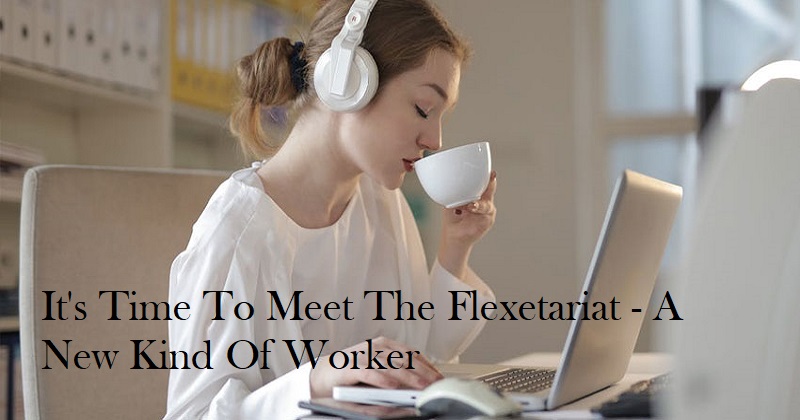
Rene Magritte’s 1953 oil painting ‘Golconda’ shows a throng of identically dressed men in trench coats and bowler hats. In 2022, the prisoners have jumped the barricades; the air is full of The Great Resignation and Quiet Quitting. Nearly half of senior HR leaders surveyed by consulting firm Gartner Inc. are concerned by ‘mass turnover events’. The post-World War II capitalism’s soaring ambition, during which professional and technical activity doubled, is no longer represented by the painting’s presumptions. When wearing a suit and tie (instead of a blue collar pair of work overalls) was associated with better status and income. When the prospect of advancement made uniformity and the daily journey into sparkling metropolis towers worthwhile costs.
Before the Covid-19 epidemic, 8% of knowledge workers had a home office. In the second quarter of 2020, 17.4% of people were working remotely on average. According to statistics, it takes 66 days to become a habit; by the spring of 2022, the epidemic had been going on for 700 days. The pandemic tipped a low rumbling about flexible working and work-life balance into a roar. Microsoft’s Work Trend Index for 2022, which surveyed over 30,000 people in 30 countries noted: ‘We’re not the same people that went home to work early in 2020’. The stop-start nature of lockdowns – still ongoing in China – would not have happened without the shift to WFH.
The Increasing Demand for Flexible Work
Flexibility comes first. The world now has a new class of workers called the Flexetariat as the flexible workplace will triumph over the rigid one. Today’s unthinking drudge, constrained by the commute, has been replaced by a very assertive worker who places freedom and flexibility at the core of their professional identity. According to the most recent American Opportunity Survey by McKinsey & Co., 87% of employees say they would accept flexibility if it were available. Approximately 58% of workers in both blue and white collar occupations already have the ability to work from home at least one day each week. According to data from the staffing company Upwork Inc., 78% of independent contractors said that having flexible scheduling is a major issue.
Some companies have faced backlash against their presenteeism efforts, with Stanford University professor Nicholas Bloom noting that noncompliance is as high as 40% in some companies trying to force return to office on staff. Tesla’s Elon Musk has adopted a novel motivational leadership style by publicly berating workers who aren’t in the office physically and suggesting ‘they should pretend to work somewhere else’.
90% of senior executives would rather operate remotely or in a hybrid setting than be present all the time. Smart leaders are aware that new strategies and timetables may be used to build culture and cohesiveness. A flexible work strategy known as #workyourway has been adopted by Fujitsu Ltd. Some European banks assert that flexibility is a competitive advantage. There are still more people who cannot work flexibly than who can, and tensions increase when they share the same workplace.
The Shift in Employee-Employer Power
180 million people will be impacted by the recent changes to EU employment legislation, which are intended to stabilise an unstable labour market. For the first time since 2014, the ‘right to request’ flexible working law in the UK is anticipated to be revised. Despite the fact that trade union participation is generally declining, during the pandemic union-led debates were held in 80% of the world’s nations. The need to ‘continue to explore the rights of persons who choose to work flexibly and create a deeper understanding of what ‘flexibility’ means for the diverse groups that make up the workforce’ was cited in a recent legislative report.
White collar demands are becoming a contagion that may indirectly increase the power of frontline workers. Part of the rebalancing of power is connected to the historically tight labor market. But part of it is a failure of leaders to update their working assumptions. It is no longer possible for an industrial society to assume that the technical processes of manufacture will exist unchanged for long in any type of work.
The Daily Commute Is Dead
The commute is now seen as a passion killer for workers. In the UK, towns like Watford, which is situated within an area known as ‘the golden triangle’ between London, Cambridge and Oxford are rising in fortune. Back to Magritte’s surreal masterpiece ‘Golconda’, depicting those samey humans in humdrum lockstep. It hangs in Houston, Texas, where I.M. Pei-designed Energy Plaza is being transformed into mixed-use workspace with apartments.
Research by office outfitter Steelcase Inc. shows that in full occupancy times 87% of workers spend two to four hours away from their desk. The office has traditionally been a place where people gather to work, but also to bond and build culture. Spare a thought for the well-intentioned CEO who wants growth to come the old-fashioned way: via the teamwork. What will matter going forward isn’t the old assumptions of large office space to house ranks of worker cubicles, but something else entirely: a place to give people meaning. The leader who wishes to get colleagues back to the office more will have to invest in a socially scientific understanding of dynamics around networks, collaboration and innovation.
However, it’s the start of a new era in which location, identity, culture, purpose, wellbeing, and productivity take place in the context of brand-new working circumstances. It’s the start of a new era in which the worker is perceived to be a person, stripped of their position, uniform, or bowler hat, and replaced with a group of people who still need to work, but in a different way than before.

Post Your Comments